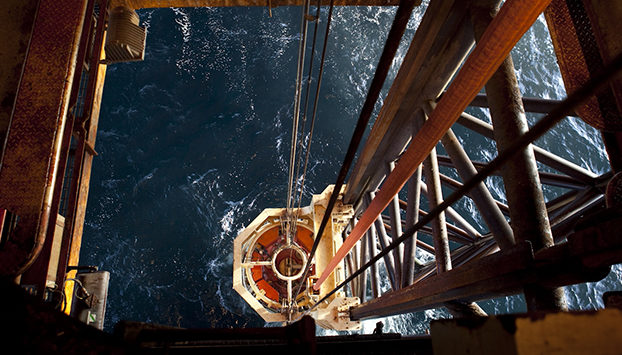
BP has confirmed a bumper $1billion investment in one of its cornerstone North Sea assets.
The cash injection is expected to add 15 years to the project – nearly doubling the site’s lifespan.
The North Sea pioneer revealed the billion dollar price tag exclusively to Energy Voice.
The money will be funnelled into its Eastern Trough Area Project (ETAP) as part of a special life extension project, securing its future through to 2030.
The area, which is comprised of nine different reservoirs, is considered one of the largest and most commercially complex North Sea oil and gas developments.
Trevor Garlick, regional president for BP’s North Sea business, said: “These are challenging times for the industry and we are having to make hard choices.
“Nonetheless, we remain committed to improving the competitiveness of the North Sea and to maximising economic recovery from our fields.
“BP’s primary areas of focus are the west of Shetland and central North Sea, where we are investing in both new developments such as Clair Ridge and Quad204, and in extending the life of our mature assets.
“Two weeks ago we welcomed the arrival of the Safe Caledonia flotel into the ETAP area, launching the start of a major investment programme to renew the platform and extend its field life.
“In parallel, we are drilling new wells on ETAP’s Machar and Marnock fields, replacing subsea infrastructure, and deploying new technologies to help maximise the fields’ recovery.
“ETAP holds significant potential and we are working to ensure its reliability, efficiency and long-term competitiveness. This project will secure the future of the field until 2030 and beyond.”
The site’s first field was discovered in 1976 and has been producing since 1998. To date, ETAP has produced 521 million barrels of oil.
The investment will promote new well delivery, including well work and stimulation.
The money will also allow BP to deliver additional living quarters, increasing personnel on site from 117 to 143.
The manpower uptake will increase the operator’s capacity to run concurrent campaigns.
ETAP is the second facility to benefit from BP’s North Sea Renewal Programme.
The scheme specifically targets ageing assets, including the Magnus field.
The investment will also involve two drilling rigs – Byford Dolphin and Ensco 101 – working on ETAP simultaneously.
The site will benefit from a subsea infrastructure replacement.
ETAP is currently undergoing its largest ever turnaround, totalling 40,000 hours of manpower.
The total is a significant increase on its historic 9,000 hours of turnaround work.
The work will include a flare-tip replacement, tie-ins for a third produced water re-injection pump, gas compressor isolation work and nine vessel inspections.
Oil and Gas Authority (OGA) chief executive Andy Samuel said BP’s investment was critical to securing the North Sea’s future.
He said: “We very much welcome the significant investment that BP is making to extend the life of the ETAP facility which has been supported by several of the fiscal measures introduced by the Government in recent years.
“We are seeing a real commitment from operators across the UKCS to improve the efficiency and productivity of existing fields, which is essential if the industry is to create a competitive cost base and sustain production.”
BP said the financial move was a direct result of government tax breaks, including a cut in the industry’s supplementary tax rate, brownfield allowance and investment allowance.
Earlier this year, Chancellor George Osborne announced a raft of measures worth $2billion to help boost the North Sea oil and gas industry.
The landmark move meant supplementary tax was cut by 10% and the petroleum revenue tax by 15%.
The decrease, which was heralded a “single, simple and generous” tax, will boost North Sea production by 15% by the end of the decade, according to the Office for Budget Responsibility.
The recent tax cuts answered a strong industry call for better government support amid dipped oil prices.
Industry doyen Sir Ian Wood led the charge for a more accommodating regime.
In the wake of the downturn, Sir Ian said a tax cut was critical for operators “to see their way through what’s going to be a very difficult period”.
Oil prices have fallen by more than 40% in the past year, dipping below $50 a barrel.
The slide has forced dozens of firms to streamline budgets, including cutting contractor rates and reducing staff numbers.
Regardless of the oil price fall, the industry’s call to action is clear, according to OGA’s Andy Samuel.
He added:”Despite the immediate challenges it is vital that the industry continues to invest in training and developing people, securing the skills and expertise the industry needs now and in the future. We encourage companies to retain apprenticeships, trainee and graduate programmes to create the next generation of oil and gas professionals.”
His call for investment in the North Sea’s future to include the next generation of innovators comes as Sir Ian Wood agreed to take part in Energy Voice’s panel discussion ahead of Offshore Europe.
To learn more click here.
Recommended for you
